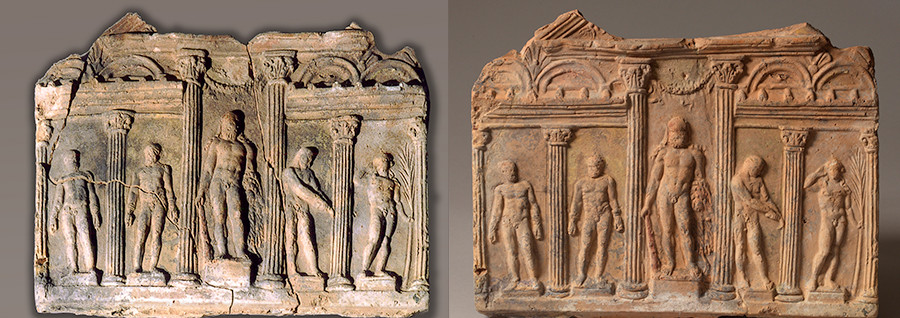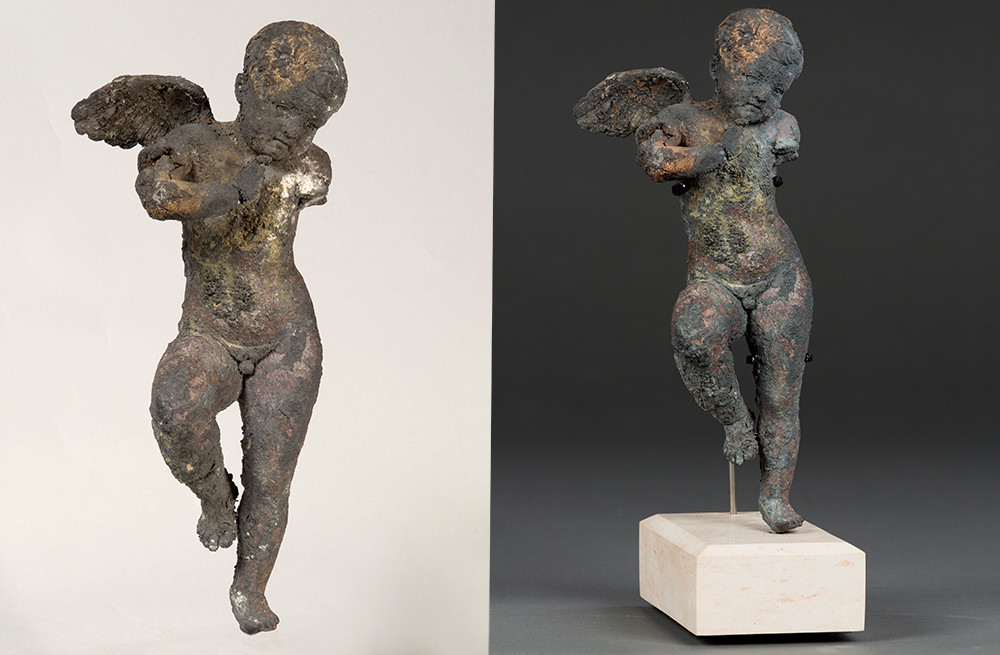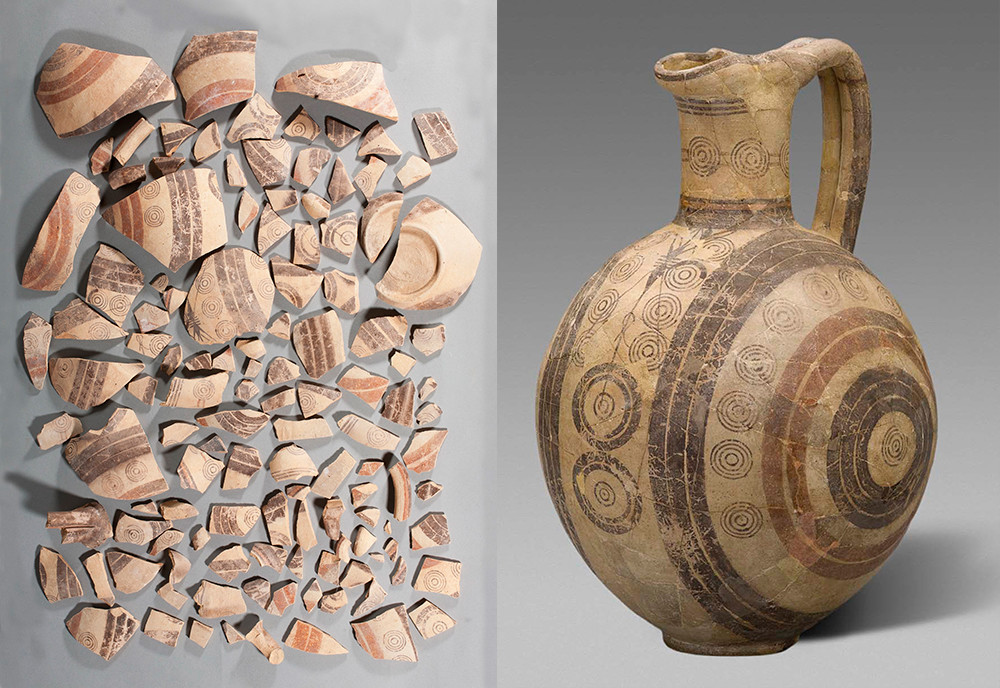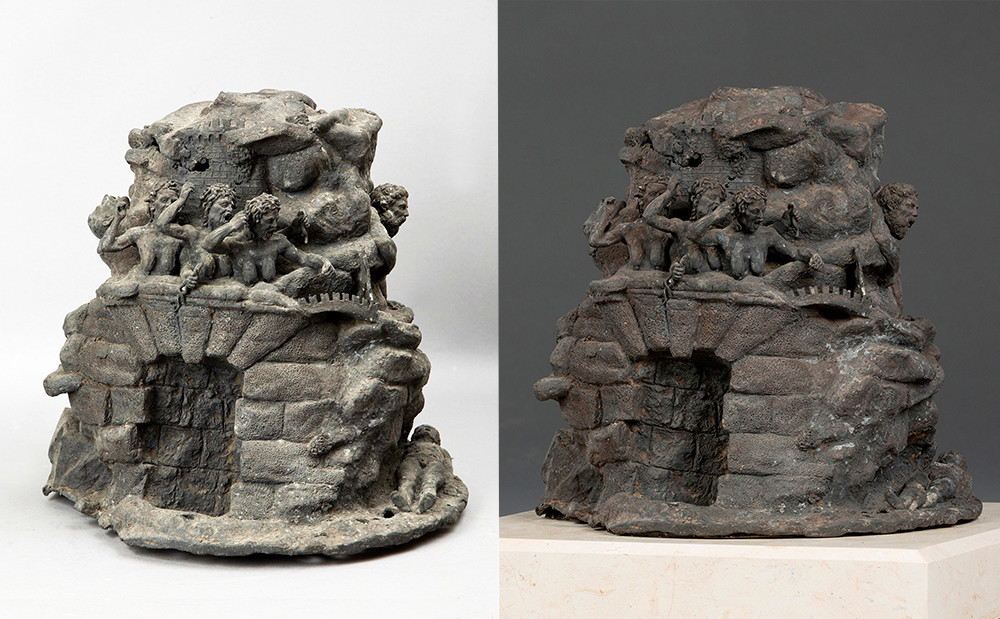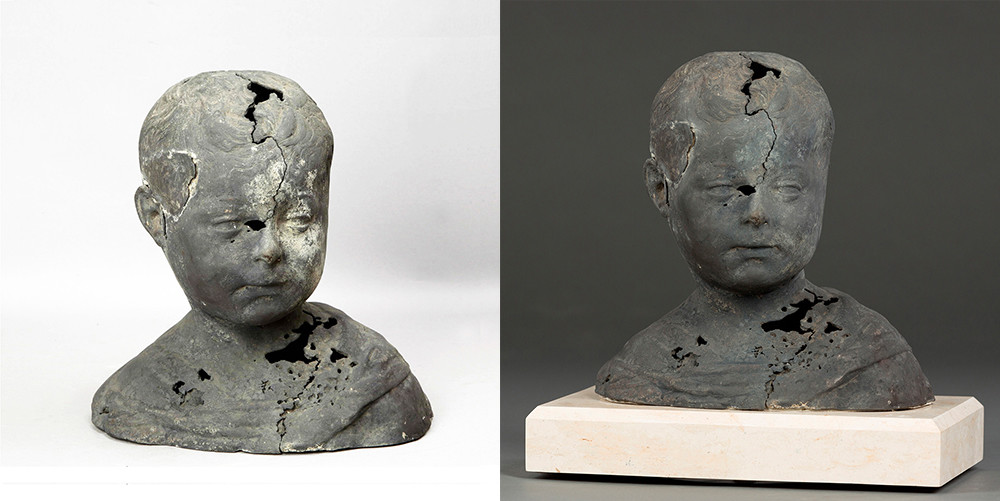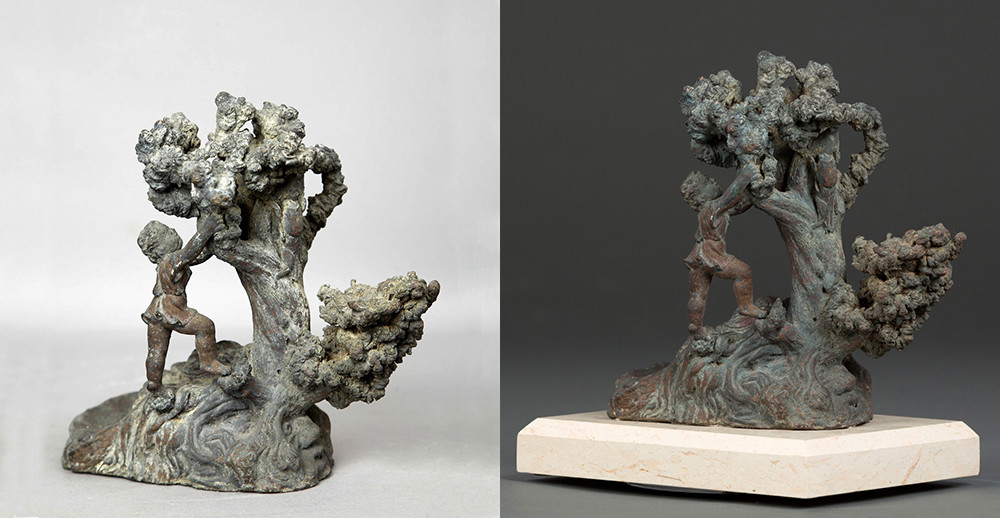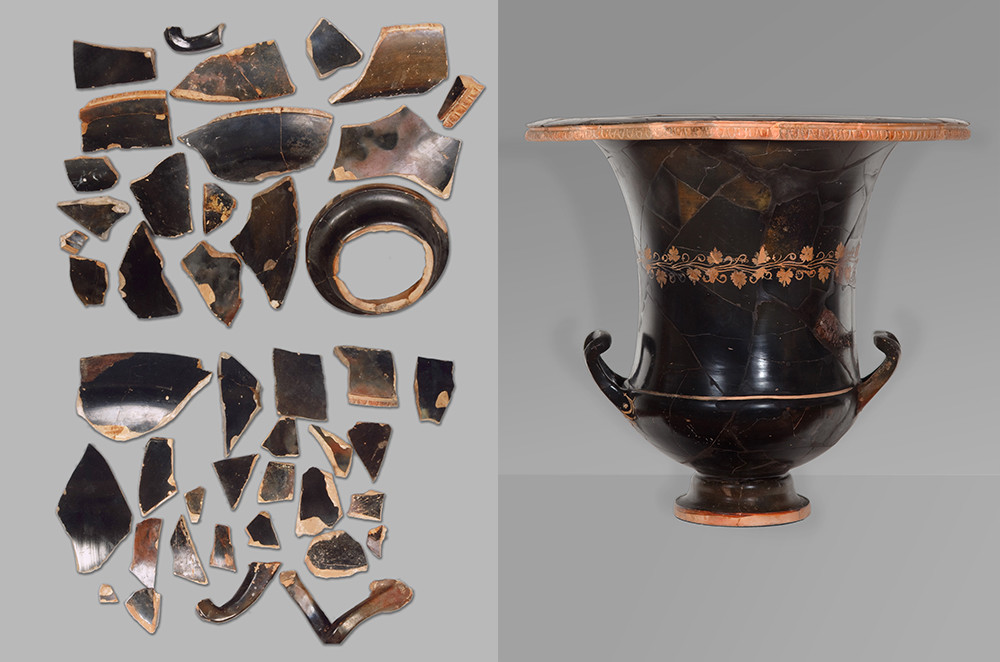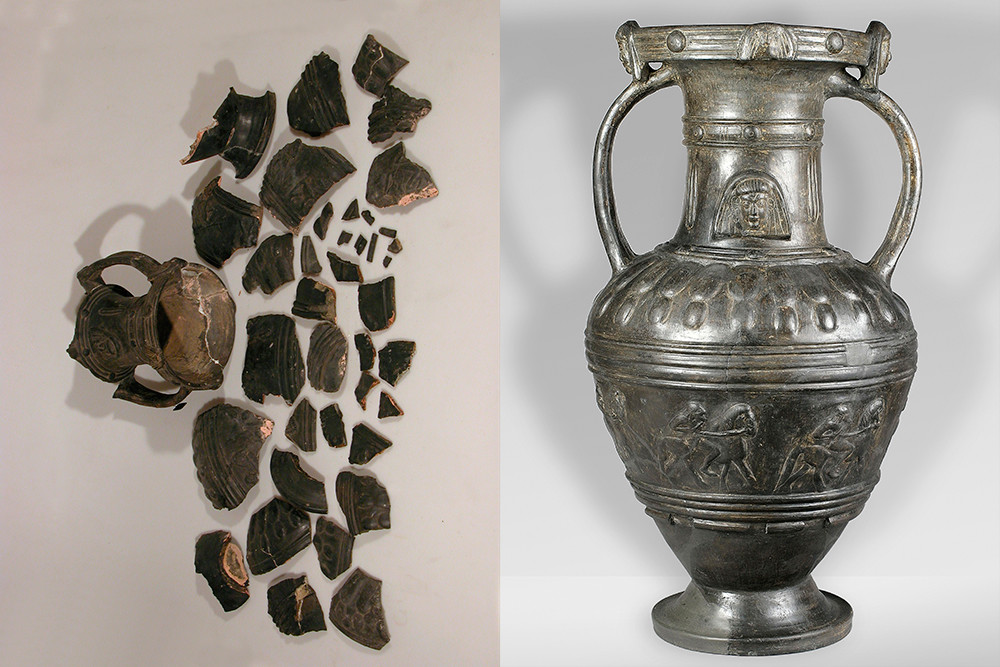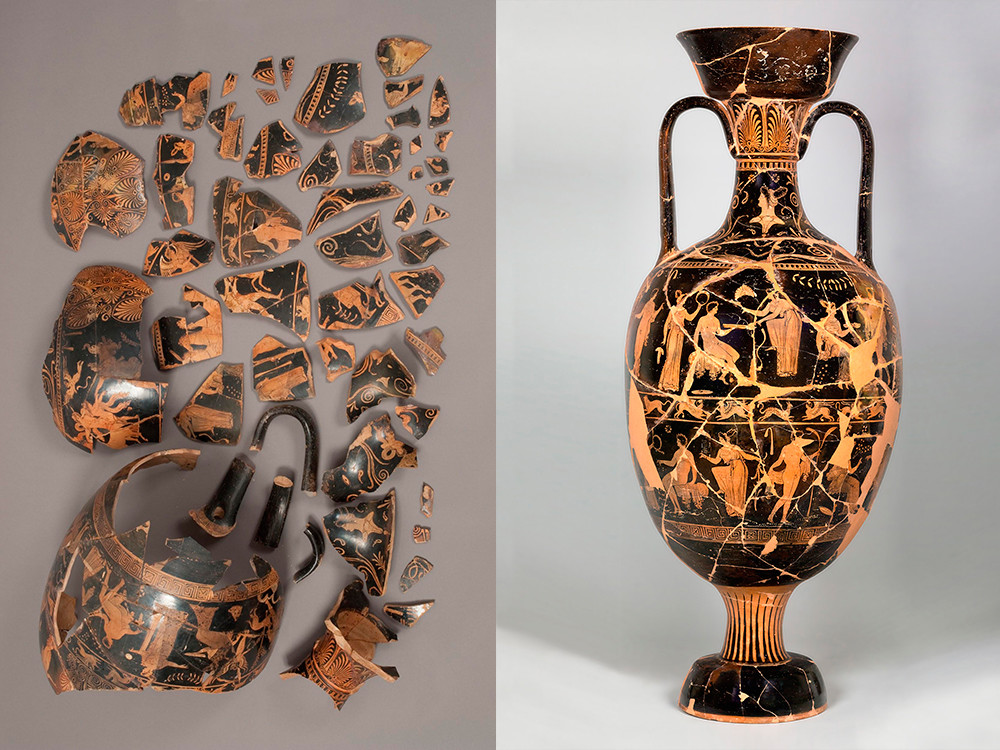Before and after: Restored artworks once damaged by the Nazis (PHOTOS)
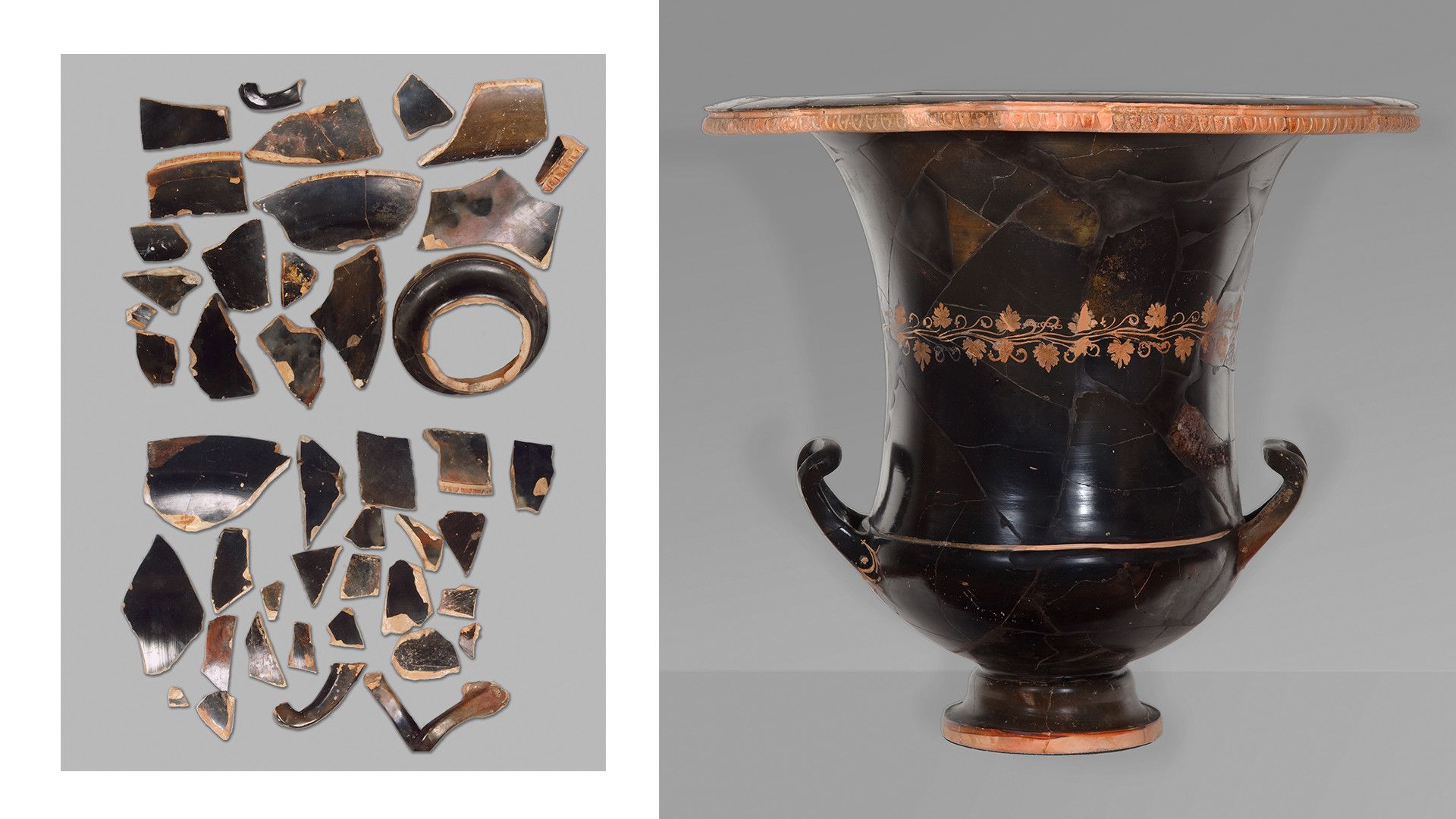
The Pushkin State Museum of Fine Arts has launched a feature on its website titled Twice Rescued, showing incredible photos of works of art, antique ceramics and sculptures that suffered damage during World War II - before and after their restoration.
In 1945, Soviet museums received art treasures brought from Germany as compensatory restitution. Soviet specialists restored these painting masterpieces from the Dresden Gallery, as well as other unique antique and Western European sculpture works and applied arts. This work continued into modern Russia, as well. In the first decade of the 2000s alone, Russian restorers brought over 750 rare objects ‘back to life’.
1. Campana relief depicting palestra with statues of athletes
Rome, 1st century BC - 1st century AD
2. Donatello D. (?), Dancing Cupid or Spiritello
Italy, 1500-1525 (?)
3. Oenochoe decorated with concentric circles
Cyprus, 7th century BC
4. Agostino Zoppo, The Mountain of Hell
Italy, mid-1550s
5. Head of a Young Boy
After a model by Desiderio da Settignano (1430-1464)
6. Donato di Niccolò di Betto Bardi, called Donatello (ca. 1386 - 1466), St John the Baptist
Florence, 1425-1430 (?)
7. Style of Andrea Briosco, called Il Riccio (1470-1532), Boy With an Insect (Inkwell)
8. Attic black-glazed calyx-krater circled with ivy wreath
Attica, early 3rd century BC
9. Bucchero amphora depicting a procession of horsemen and a goddess's heads
Etruria, 6th century BC
10. The Darius Painter, Apulian red-figure amphora depicting Actaeon's death
Southern Italy, Apulia. From Ceglie del Campo, ca. 320 BC
The ‘Twice Rescued’ photo exhibition of artworks restored in the Pushkin Museum workshops will open in the Indian city of Chennai in September 2020 and at the Pushkin Museum itself in October 2020.
If using any of Russia Beyond's content, partly or in full, always provide an active hyperlink to the original material.
Subscribe
to our newsletter!
Get the week's best stories straight to your inbox
